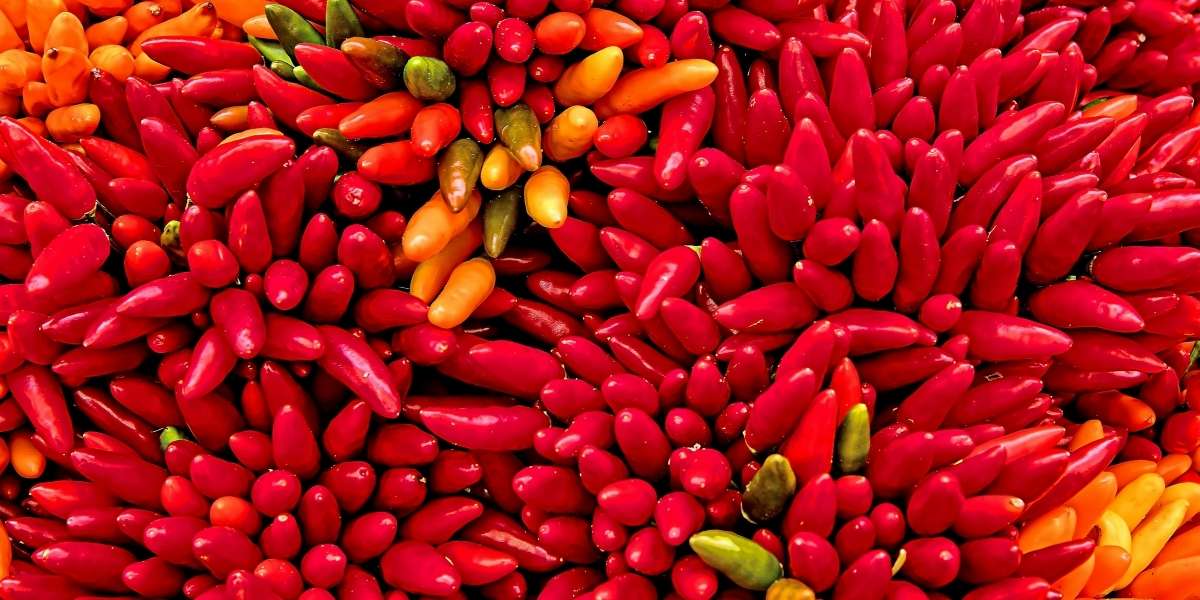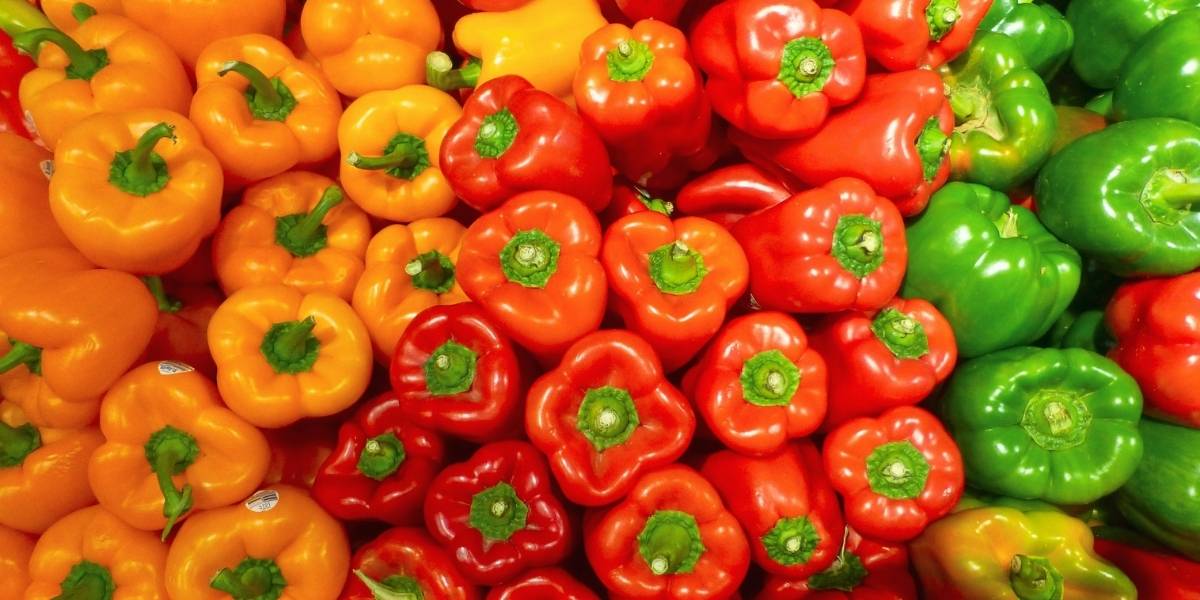The World’s Hottest Peppers: Meet Pepper X & The Carolina Reaper
For those who chase the thrill of intense heat, the world of chili peppers offers an exhilarating and sometimes agonizing journey. The pursuit of the “world’s hottest pepper” is a fervent competition among growers, pushing the boundaries of what the human palate can endure. At the forefront of this fiery frontier stand two formidable champions, both bred by the same ingenious cultivator: the Carolina Reaper and its successor, Pepper X. These aren’t just spicy condiments; they are biological marvels, packing a scorching punch measured in millions of Scoville Heat Units (SHU), capable of transforming the most seasoned chili-head into a sweating, teary-eyed testament to capsaicin’s power.
Read Also: Memphis-Style Barbecue: A Flavorful Journey to the Heart of Tennessee Cuisine
The journey to cultivate such extreme heat has been decades in the making, evolving from comparatively mild habaneros to peppers that rival military-grade pepper spray in their intensity. These super-hot chilies are more than just ingredients for hot sauce; they represent a fascinating intersection of botany, human endurance, and a passionate subculture dedicated to pushing the limits of flavor and pain. Understanding the science behind their heat, their origin, and their incredible Scoville ratings helps to truly appreciate the formidable nature of Pepper X and the Carolina Reaper.
Understanding the Scoville Scale and Capsaicin
To truly grasp the intensity of the world’s hottest peppers, it is essential to understand the Scoville Scale, the universally accepted measurement of a chili pepper’s pungency. Developed by American pharmacist Wilbur Scoville in 1912, the Scoville Organoleptic Test originally involved diluting an alcohol extract of the pepper with sugar water until no heat could be detected by a panel of tasters. The degree of dilution determined the Scoville Heat Unit (SHU) rating. For example, if it took 1,000 parts of sugar water to one part pepper extract to eliminate the heat, the pepper would be rated at 1,000 SHU.
Today, while the principle remains, modern technology employs High-Performance Liquid Chromatography (HPLC) to directly measure the concentration of capsaicinoids, the chemical compounds responsible for the heat in chili peppers. Capsaicin is the primary capsaicinoid and the very substance that triggers the heat receptors in the human mouth, creating the burning sensation. The higher the concentration of capsaicin, the higher the SHU rating and the hotter the pepper. Pure capsaicin itself measures approximately 16 million SHU, serving as the theoretical maximum on the scale.

Photo Credit: Unsplash.com
To put this into perspective, a common jalapeño pepper typically ranges from 2,500 to 8,000 SHU, while a habanero can be anywhere from 100,000 to 350,000 SHU. The leap to “super-hots” involves crossing the 1 million SHU threshold, a feat that was once thought impossible. The relentless work of breeders like Ed Currie has not only shattered these perceived limits but has redefined what “hot” truly means in the culinary world.
The Reign of the Carolina Reaper
For a decade, the Carolina Reaper stood as the undisputed monarch of the chili pepper world, holding the Guinness World Record for the hottest pepper from 2013 to 2023. Bred by Ed Currie, the founder of PuckerButt Pepper Company in South Carolina, the Carolina Reaper (originally known as “HP22B”) was the result of crossbreeding a “really nastily hot” La Soufriere pepper from the Caribbean island of St. Vincent and a Naga pepper from Pakistan. This intensive selective breeding process aimed to maximize capsaicin content, culminating in a small, gnarly, bright red pepper with a distinctive pointed “stinger” tail.
The official average Scoville Heat Unit rating for the Carolina Reaper, as certified by Winthrop University, is an astounding 1,641,183 SHU, with individual peppers sometimes peaking over 2.2 million SHU. To put this into context, it is approximately 200 times hotter than an average jalapeño. Beyond its extreme heat, the Carolina Reaper is often described as having a surprisingly fruity flavor, a sweet and smoky taste that quickly gives way to an intense, prolonged, and often overwhelming burn.
The Carolina Reaper became a sensation, featuring prominently in chili-eating challenges, hot sauce formulations, and popular media, cementing its reputation as a legend among heat seekers. Its reign pushed the boundaries of pepper breeding and created a global community of “pepperheads” eager to test their limits. While it has now been dethroned, the Carolina Reaper remains one of the most famous and widely recognized super-hot peppers globally, a testament to Ed Currie’s pioneering work in the field.
Introducing Pepper X: The Current World Champion
In October 2023, after a decade of development and shrouded in secrecy, Ed Currie unveiled his new masterpiece, Pepper X, which was officially recognized by Guinness World Records as the new hottest chili pepper on Earth. This groundbreaking pepper smashed the previous record, clocking in at an astronomical average of 2,693,000 Scoville Heat Units (SHU). This makes Pepper X over a million SHU hotter than the Carolina Reaper and, remarkably, nearly as potent as some law enforcement-grade pepper sprays, which typically range from 2.5 to 5.3 million SHU.
Pepper X is the result of over 10 years of crossbreeding by Currie, who meticulously worked to pack even more capsaicin into its distinctive, gnarled, yellowish-green pods. The high number of curves and ridges on the pepper’s surface is crucial to its extreme heat, as it allows for more placenta, the tissue that holds the seeds and produces the capsaicinoids. Its flavor profile is described as having earthy tones, with a sweet and fruity initial taste that quickly escalates into a relentless, searing heat that spreads throughout the mouth and throat.
Unlike the Carolina Reaper, seeds for Pepper X have not been publicly released, maintaining its proprietary status. The only way to experience Pepper X directly is through hot sauces and other products manufactured by Ed Currie’s PuckerButt Pepper Company, most notably “The Last Dab” hot sauce from the popular YouTube series Hot Ones. This limited availability further adds to the mystique and allure of the current world’s hottest pepper, making it a rare and coveted experience for those brave enough to try it.
The Man Behind the Heat: Ed Currie and PuckerButt Pepper Company
The driving force behind both the Carolina Reaper and Pepper X is Ed Currie, a passionate and somewhat unconventional chili pepper breeder based in Fort Mill, South Carolina. Currie, the founder and president of PuckerButt Pepper Company, has dedicated decades to the art and science of cultivating ever-hotter chili peppers. His journey began with a personal interest in the medicinal properties of capsaicin and evolved into an obsession with pushing the genetic boundaries of the Capsicum plant.

Photo Credit: Unsplash.com
Currie’s approach to breeding involves painstakingly cross-pollinating different pepper varieties on his farm, meticulously selecting for the traits of extreme heat and unique flavor profiles. His work is not merely about creating a burn; he aims for peppers that also possess distinctive tastes before the heat takes over. The development of a new record-breaking pepper like Pepper X is a lengthy process, often taking over a decade of careful selection, growing, and testing to stabilize the desired characteristics.
PuckerButt Pepper Company, founded in 2003, is now recognized as a leading purveyor of super-hot peppers, seeds, pepper mash, and hot sauces. Ed Currie’s appearance on shows like Hot Ones has catapulted him into a cult figure among chili enthusiasts, celebrated for his dedication to the craft and his remarkable achievements in the world of extreme heat. His commitment to research and development continues to keep the chili pepper world eagerly anticipating what fiery creation he might unleash next.
Safety and the Future of Super-Hot Peppers
While the allure of tasting the world’s hottest peppers is strong for many, it is crucial to approach them with extreme caution. The capsaicin levels in peppers like Pepper X and the Carolina Reaper are so high that they can cause intense physiological reactions, including severe burning sensations, sweating, tearing, abdominal pain, nausea, and even vomiting. For individuals not accustomed to such extreme heat, or those with underlying health conditions, consumption can lead to significant discomfort and, in rare cases, require medical attention. Handling these peppers also requires care, as contact with skin or eyes can cause severe irritation.
Read Also: The Bountiful Fields and Fertile Heritage of Tennessee Agriculture
The future of super-hot peppers continues to be an exciting, albeit fiery, frontier. Researchers are interested in capsaicin for its potential medicinal properties, including pain relief and anti-inflammatory effects. Meanwhile, breeders like Ed Currie are likely to continue their quest to push the limits of the Scoville Scale, driven by a blend of scientific curiosity and a competitive spirit. As long as there are those who seek the ultimate culinary thrill, the world’s hottest peppers will continue to evolve, promising an even more intense experience for the brave palates of tomorrow.








